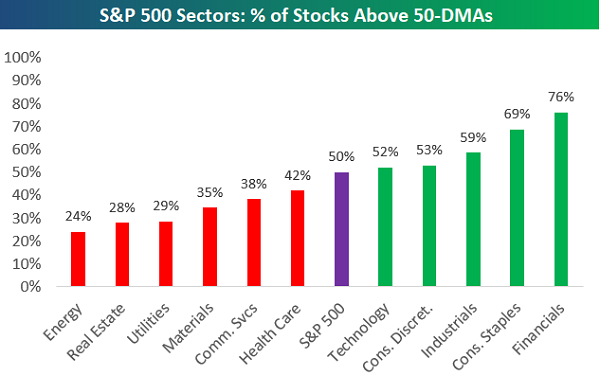Needless to say, this week got off to a bad start for Bulls, before Monday morning even rolled around.
Selling pressure started over the weekend, when most investors probably weren’t even thinking about stocks. President Trump fired off a tweet on Sunday, suggesting the U.S. would raise tariffs on $200 billion Chinese goods from 10% to 25% on Friday and consider taxing another $325 billion of items.
A war of words ensued on both sides and the news kicked off a roller coaster ride in the global markets. The U.S. followed through with its threats on Friday and the Chinese have promised retaliatory trade actions.
The volatility can be best summed up with this fact: the Nasdaq Composite is down seven of the past eight sessions… and the other day the index closed at a record high!
Riding the Wave of Volatility
The CBOE Volatility Index (VIX) jumped 25% on Tuesday on top of a 20% gain on Monday.

Volatility gets a bad rap and the VIX is often referred to as a “fear gauge”. It’s true that most investors lose money when stock prices go down and you usually only hear about the VIX when there’s a sizable decline in the market.
However, contrarian investors tend to embrace volatility. When prices make volatile swings in the short-term, savvy traders recognize this as an opportunity to enter and exit investments at optimal prices to boost long-term performance.
Investors who may be looking at the recent sell-off as a buying opportunity, may want to consider the following chart from the Bespoke Investment Group. It shows that 6 of 11 sectors in the S&P 500 index are now in oversold territory.

Source: Bespoke Investment Group
Earnings Season Finishing on Positive Note
Earnings season officially ended this week, but several blue-chip names are still on the calendar to report quarterly results next week, highlighted by the following names:

75% of companies in the S&P 500 have exceeded profit estimates so far this quarter, which is above the historical average of 67%. The best growth has been from the healthcare sector, while energy names have been a drag on overall growth. Four weeks ago, aggregate earnings were expected to fall 3% to 4% year-over-year, but the actual results have yielded a 1.2% increase.
It appears that we managed to escape an earnings recession in the first quarter, but volatility has reared its ugly head again this week.
After a hot start to the year, when the major U.S. stock market averages gained at least 14% through April, it’s scary to see how quickly those gains can evaporate. More than once this week, investors woke up to the news that the Dow Jones Industrial Average was set to open down 500 points or more.
This kind of news is especially troubling if you’re retired or planning on retiring soon. Rather being concerned with than trade concerns halfway around the globe, all you really care about is protecting your hard-earned nest egg and generating enough income to sustain a comfortable lifestyle.
In that case, “sell in May and go away” doesn’t work either. Interest rates are back down in 2019, and banks and bonds are paying 2% or 3% at best. Even if you’ve saved up $1 million, a portfolio of cash and fixed income just doesn’t get you far these days.
The good news is, there’s a better way. My colleague Brett Owens has devised a “pullback-proof” portfolio of 5 stocks with an average dividend yield north of 7%. They’re all still cheap even with the gains we’ve seen in 2019; which affords downside protection, if we do see more volatility in the coming months.
These 5 stocks that Brett has found earn money today that’s used to reward investors with dividends that are 2x to 3x higher than what cash and bonds are currently paying. 7%-plus yields that will be paid, whether the S&P 500 goes up another 5%, falls 5% or remains flat for the remainder of the year.
Savvy contrarians know that it pays to buy when volatility creates opportunities and Brett sees 7% to 15% annual price upside from these 5 “Steady Eddie” picks. The best part is that these payouts are growing! Consider his top pick of this quintet, a REIT paying an incredible 8.5% dividend that’s DOUBLED in just the last four years.
Want to see more? Our entire 5-stock “pullback proof” portfolio is waiting for you now. Click here to get full details on these “must-have” retirement plays: names, tickers, buy-under prices and the full story on how they generate their outsized dividends.
